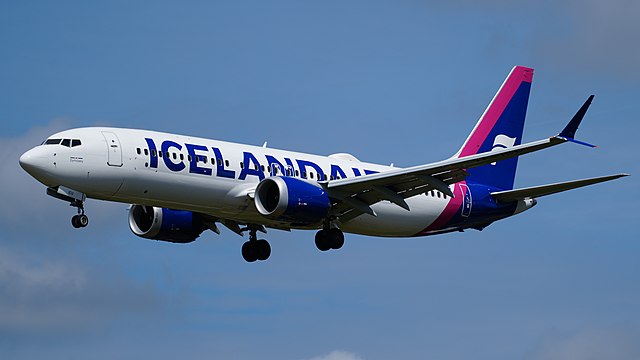29 Apr 2016
Statistical Analysis for Scheduled Maintenance Optimization - SASMO
Maintenance programs help ensure safe, reliable, and cost‑effective airplane performance. Maintenance of any aircraft should be a predictive one rather than a reactive one. Predictive maintenance is a more advanced form of proactive maintenance, which involves the use of data collection and analysis methods to identify trends. The aim of predictive maintenance is to correct issues before they cause unscheduled maintenance, where data collection and analysis is conducted properly to ensure maximum effectiveness.
Boeing has worked with operators and regulatory agencies to develop and manage maintenance programs for its commercial fleet. As knowledge of airplane performance increases over time, that experience is applied to maintenance programs. With sufficient data due to the very long period that the Boeing A/Cs are in service, predictive maintenance tools such as Boeing’s Statistical Analysis for Scheduled Maintenance Optimization (SASMO) has become extremely effective and this have brought the reliability of some of the Boeing model up to the best in its class, with 99.5% of departures on time.
So, what is SASMO?
SASMO is a program/computer based tool which digitizes airline maintenance data, by using highly complex algorithms to do statistical analysis of this data. Statistical analysis of the data means, analyzing scheduled and unscheduled maintenance observations to calculate probability or reliability of task interval prototypes.
HBControls process maps the un-scheduled maintenance data to form mapped maintenance data. It identifies an optimal interval for performing the maintenance task based on a result of the statistical analysis to form a recommended maintenance interval.
What is the benefit?
- It helps in establishing most efficient maintenance intervals and improves work packages.
- Reduces ground time for scheduled
- Increases the airplane
- Reduces labor and material
- It helps in airline operational strategy and drives value for the
Is it approved by regulatory authorities?
Yes!
The process has been approved by the U.S. Federal Aviation Administration (FAA), European Aviation Safety Agency (EASA) and Transport Canada Civil Aviation Authority (TCCAA).
To understand SASMO, we need to first understand Aircraft Maintenance, its Philosophy and Evolution:
Maintenance is performed to ensure that all component parts are operating at peak efficiency and with optimal safety. Different maintenance tasks may need to be performed at different intervals than other maintenance tasks.
A maintenance task is a task or event is associated with inspecting, maintaining, repairing, and/or replacing a component or sub component. Maintenance tasks to be performed on a system are typically scheduled based on the review and analysis of scheduled maintenance data only. The analysis and review of maintenance data does not include line station and operational maintenance data. Moreover, the current analysis and review does not use any scientific method to evaluate and analyze in-service data.
The current scheduling of maintenance data may be identified based on a limited scope of data (provided by operator) that does not represent all aspects of aircraft maintenance events. A maintenance event may include, without limitation, a functional part failure, a system failure, loss of function, decreased function, service interrupt, corrosion, wear, slow response time, decreased efficiency, decreased fuel efficiency, loss of tire pressure, or any other event that necessitates maintenance, repair, or replacement of a component or subpart of a component.


1980 - Current System Oriented (MSG-3 Multiple Revisions Efficiency)
- Top Down
- Reliability centered
- Damage tolerance
- Corrosion prevention
- Zonal analysis
- Structural health
- Fatigue damage
1970 Component Oriented: MSG-2
- Bottom Up.
- On condition.
- Condition monitoring (non-safety)
1968 Scheduled Mx. Logic: MSG-1
- Overhaul
- Hard time limits
Boeing uses design information and engineering knowledge, judgment, and manual engineering analysis to determine how frequently different maintenance tasks should be scheduled. For example, as part of instructions for continued airworthiness (ICA) requirements, aircraft engineers develop an initial scheduled maintenance program, also known as maintenance review board report (MRBR) or maintenance planning document (MPD). The process involves an industry sanctioned maintenance steering group (MSG-3) analysis to predict scheduled maintenance requirements for each aircraft model. Although MSG-3 is an industry proven tool, it provides virtually no guidance regarding maintenance interval determination. Current practice relies on aircraft engineering judgments and prudence dictates higher conservatism in scheduling frequency of maintenance.
The manual engineering analysis is typically performed using data from a limited number of operators to identify the appropriate frequency and scheduling of these maintenance tasks. Subsequent optimization of scheduled maintenance tasks is performed based on scheduled maintenance data gathered by participating operators during regular, out-of service, scheduled maintenance. In other words, subsequent optimization of maintenance tasks is determined based on scheduled maintenance data, which is largely limited to hangar maintenance findings.
How it works?
The process maps the un-scheduled in-service maintenance data to the scheduled maintenance data for the given
Aircraft model to form a mapped maintenance data. The process performs a statistical analysis on the mapped maintenance data. The process identifies an optimal interval for performing the maintenance task based on a result of the statistical analysis to form a recommended maintenance interval.
This statistical analysis on in-service maintenance events, in addition to scheduled maintenance events, minimizes the frequency of in-service maintenance events and improves aircraft dispatch with optimized scheduling of preventative scheduled maintenance tasks.

SASMO Optimization Process:

Examples:
The Next-Generation 737 was the first model to implement this statistical analysis process. Based on analyses of maintenance tasks occurring at 4,000 flight hours, 80 percent of scheduled maintenance tasks were escalated, 10 percent remained at their current interval, and 10 percent were de-escalated to minimize unscheduled maintenance events.
Analyses were also performed on the 777 tasks occurring at 7,500 flight hours. As a result of these analyses, 68 percent of task intervals were escalated, 26 percent remained the same, 6 percent were de-escalated, and one task was deleted. While the maintenance interval escalations are significant, these analyses also demonstrate that maintenance optimization can also result in de-escalation, minimizing unscheduled maintenance-related events.

References:
Boeing Edge article on SASMO
IATA 8
th Maintenance Cost Conference
Aviationweek Magzine
Boeing Commercial Airplane Magazine
Google book articles on Optimized maintenance program and SASMO










